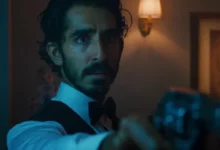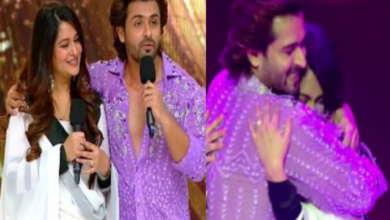The director of Do Aur Do Pyaar, Shirsha Guha Thakurta, says she is ‘not deterred’ by the film’s low opening
Even though Do Aur Do Pyaar, Shirsha Thakurta Guha’s directing debut, didn’t shatter box office records, she is nevertheless “undeterred” and upbeat. For her, spreading the word that marriage is about more than just love is the genuine mark of success.

In a special interview with Zoom, Shirsha delves further into the film’s production and discusses how and when she made the decision to take on the project. She said, “I see people struggling to maintain the ‘hallmark’ version of love.” However, she goes on to say that true love is cyclical rather than linear. It appears and disappears, and the writings and songs are all false. Continue reading to learn more about the film’s complexities, casting, and “perfect love myths.”
I like your movie, but I’m not a fan of the title. When and how did you decide to create Do Aur Do Pyaar?
What becomes of all those flawlessly happy couples that we portray in our movies has always piqued my curiosity. When DDLJ ended twenty years later, what happened to Raj and Simran after they fled on the train? Right now, where are they? Have they stopped being lovers and become flatmates? What happens when love turns into a habit and the original spark fades? I’ve always found this fascinating.
In our contemporary life, with so many temptations from social media and Hallmark movies, I see individuals around me struggle to cling to this idealized notion of love. True love is cyclical rather than linear. It appears and disappears. All the books and songs were false.
You wanted to dispel the illusions around ideal love.
I grabbed at the chance to depict a more lived-in and authentic love tale, hence when my producers Swati Iyer and Tanuj Garg presented this idea to me—an adaptation of an indie American film called The Lovers by Azazel Jacobs—I was thrilled. It has taken four years to finally share this tale with you; this was in 2020, just before Covid struck.
The modest opening, is it putting you off? Don’t be; your movie will be acknowledged as a work of art.
Haha. I really appreciate your nice remarks. The modest opening doesn’t stop me from trying. All I wanted to do was convey this tale as truthfully and thoroughly as I could, and maybe if I succeeded in doing so, it might speak to someone. As a storyteller, it is all I am capable of. However, I’m hopeful that more people will find the movie and become enamored with our characters as a result of the excellent word of mouth.
It differs greatly from Lovers, the original source. Why did you decide to modify the film’s structure after adapting the original version?
As I already said, I enjoyed the original movie’s one liner. However, the film itself was unconventional and very unlike in culture. Suprotim Sengupta and Eisha Chopra, the authors, did a great job implementing the structural adjustments. Their plan to bring my main characters, Ani and Kavya, back to her birthplace in order to revive their romance struck me as brilliant. I thought it was particularly hilarious and original that they would interrupt a burial rather than, say, a wedding, which is the custom in Bollywood films. Compared to the original, they gave the characters a lot more depth, humor, and relatability for our consumers.
It’s a magical casting. This is the greatest Vidya Balan has ever done. Was she your first pick? Was it hard to persuade her? If she hadn’t accepted, I don’t know what you would have done!
I concur. I was fortunate. Without a doubt, Vidya was the top option. No one else could have the warmth, beauty, or vulnerability that she gives to the part. Your gaze is fixated on her. Her fire contains no lies. Without her, I don’t believe this movie would have been made. Pratik Gandhi is a complete joy and surprise. He portrays the Bengali geek so lovingly. Could you tell me about his casting? We were aware that we needed to hire an actor who could compete with Vidya, who is a formidable actress. Additionally, Ani’s character would behave in ways that viewers would interpret as improper. Ani should seem bewildered and screwed up rather than arrogant and relishing in her infidelity and cheating. Pratik does a fantastic job at it.
They dance in unison! Will Bin Tere Sanam never be the same?
That music is extremely lively and captivating. Suprotim came up with the idea to utilize the music. He forced us to view the original video, where the heroine does bizarre dance steps in front of several starved, emaciated calves. I immediately told the producers and myself that we needed those dancing skills in our movie. And Pratik and Vidya were unstoppable!
One thing unites Sendhil and Ileana: their cheechee angrezi.Why did you choose them?
They just had a great match with their roles. We were aware that we couldn’t overindulge children in screens. They have to be really unique, therefore. Ani and Kavya were searching for things that they were no longer able to find in each other in Sendhil and Ileana. All four of them were always seen as a unit in our minds.
They enhanced one another. Kavya has a vibrant, exuberant personality. Ani was a genuine, easygoing person. Nora was a needy, neurotic person. Vikram was self-sufficient and attractive. Most significantly, they shared Vidya and Pratik’s trait in that they seem and feel nice and personable. It was crucial for the film to succeed that we care about their narrative arcs as well. They need to seem as real dangers to the union.
Shirsha, your amazing movie starts off as a double love triangle but ends up endorsing marriage as a social institution. What, in your opinion, keeps a contemporary marriage together?
I wish I knew the solution. Every marriage, in my opinion, will have its own set of keys. But in my opinion, having a strong friendship, having open communication, having disagreements, and feeling at ease with one another are all crucial for a long-lasting marriage. This lovely term is often underestimated. ease. You must be the solace for one another. Locate a Chicken 65 of your own.
Without the humor, of course, Basu Bhattacharya would have directed this movie if it had been done in the 1970s. Who inspires you?
I know it sounds corny, but I’m Bengali. But naturally, Satyajit Ray. Regardless of the genre, his storytelling’s simplicity, elegance, and compassion will always be my greatest source of inspiration. Of course, there was Alexander Payne, Sam Mendes, Wong Kar Wai, and Hrishikesh Mukherjee.
The whole scene in which Kavya and Ani pay her a visit at her Ooty house is absent from the original movie. Don’t you think it might have been a stand-alone movie?
To be honest, I think that’s the best portion of the movie. Before things became very chaotic again in the smaller, more realistic world, it was the only area of it where we could really open it up, add plenty of more people, more fun, and more music. It had so much flavor, the performers, characters, and faces were gorgeous, and the settings were stunning. I would have stayed in that universe indefinitely if given the option, but then reality set in. Just like it did with Kavya and Ani. We imagined a different Ooty movie with Kavya and Ani’s college romance, their escape, and the scandal in the Ganeshan family. Simply put, we withheld it from you.
‘I feel homesick when I am not with you’ is my favorite sentence among the four protagonists’ spoken words, which are the greatest I have heard in a long time. Where did you get these amazing words?
Suprotim, Eisha, and Amrita Bagchi are all of that. The authors. They had the challenging task of crafting language that sounded genuine and ordinary while maintaining the plot’s interest, as we wanted to create a really lived-in, authentic love story. Even the most basic things may seem very lovely or humorous at times. For example, “Kabhi Kabhi shayad pyaar kaafi nahin hota” is one of my favorite quotes. The central idea of our movie is this simple but very nuanced idea. It contradicts what our movies usually teach us, which is that love is all about falling in love and that once you’re there, it’s there to stay. It’s not.






